Cause of death Car accident Ex-spouse Amelia Hope Brumbach Resting place Jeffersonville | Name William Branham Religion Christian | |
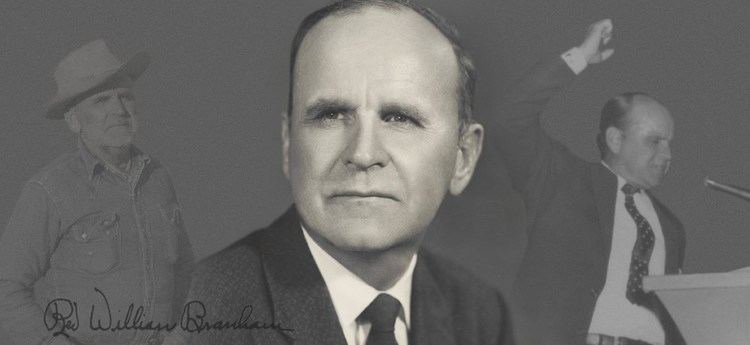 | ||
Born April 6, 1909 ( 1909-04-06 ) Cumberland County, Kentucky Books Healing Thoughts: A Collection of Quotations from the Sermons of William Marrion Branham Children William Paul Branham, Rebekah Branham Smith Parents Charles C. E. Branham, Ella Rhee Harvey | ||
Musz j nektek jj sz letni william m branham
William Marrion Branham (April 6, 1909 – December 24, 1965) was an American Christian minister and faith healer, generally acknowledged as initiating the post-World War II healing revival.
Contents
- Musz j nektek jj sz letni william m branham
- William branham challenged by 350 full gospel ministers
- Early life
- The Healing Revival
- Decline of the Healing Revival
- Death
- Teaching
- Denial of an eternal hell
- Oneness Pentecostalism
- Serpents seed
- View of women
- Eschatological teachings
- Anti denominationalism
- Legacy and influence
- References

Branham's meetings as a faith healer started in 1946. He claimed to have received an angelic visitation on May 7, 1946 commissioning his worldwide ministry. His ministry started to falter in 1955 and never regained the status it had in its initial stages. Branham died in a car accident in 1965.
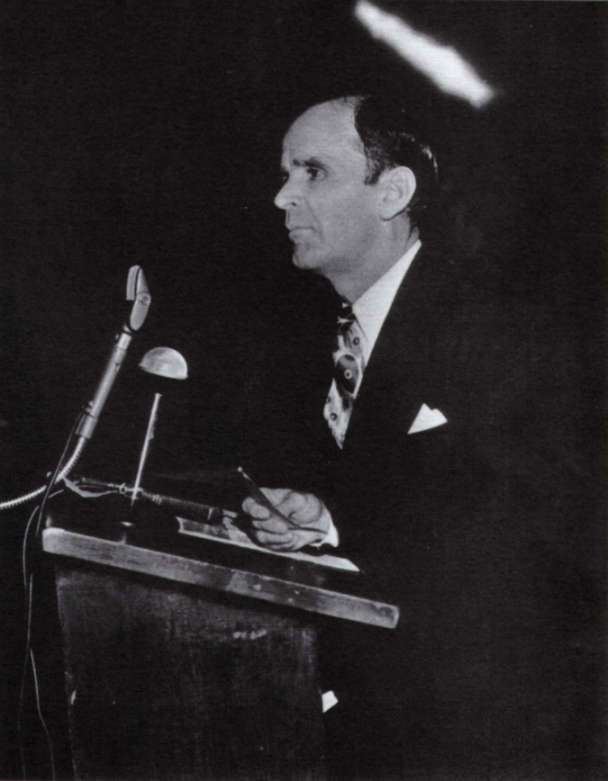
Branham's most controversial revelation was his claim to be the end-Time "Elijah" prophet of the Laodicean Church age. His theology seemed complicated and bizarre to many people who admired him personally. In his last days, Branham's followers placed him at the center of a Pentecostal cult of personality that continues to this day. However, other than those that still follow him as their prophet, Branham has faded into obscurity.
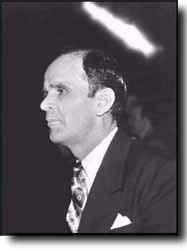
William branham challenged by 350 full gospel ministers
Early life
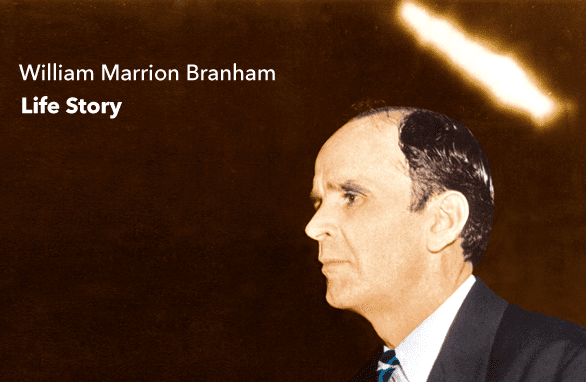
William Branham was born in a small log cabin near Burkesville, Kentucky on April 9, 1909. He claimed that at his birth a "Light come [sic] whirling through the window, about the size of a pillow, and circled around where I was, and went down on the bed." He also claimed to have heard a "voice" speaking to him from a tree at the age of three, informing him that "he would live near a City called New Albany". According to Branham, they moved the same year.
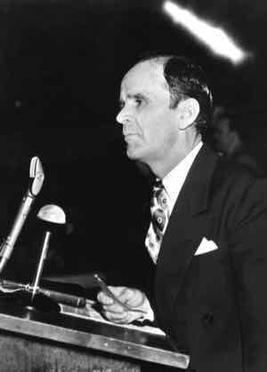
Branham's father was an alcoholic, and William Branham often talked about how his upbringing was difficult and impoverished, although his claims of poverty have been called into question, because, among other things, he was able to purchase a new car when he was 18 years old.
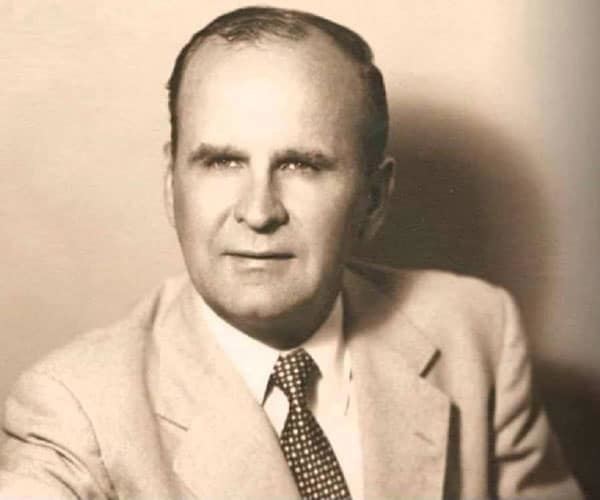
He left home at age 19 and journeyed to Phoenix, Arizona, where he worked for several years on a ranch. He returned to Jeffersonville, Indiana when his brother died. Soon after, while working for the Public Service Company of Indiana, Branham had an accident and was almost killed. He claimed to have heard a "voice" again and this started Branham seeking God. He began attending the First Pentecostal Baptist Church in Jeffersonville and was eventually ordained an Independent Baptist minister.
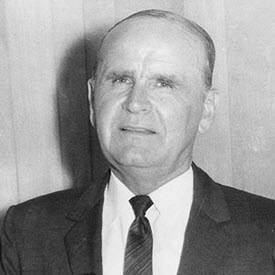
Branham married Amelia Hope Brumbach (b. July 16, 1913) in 1934 and they had two children together, William "Billy" Paul Branham (b. September 13, 1935) and Sharon Rose Branham (b. October 27, 1936).
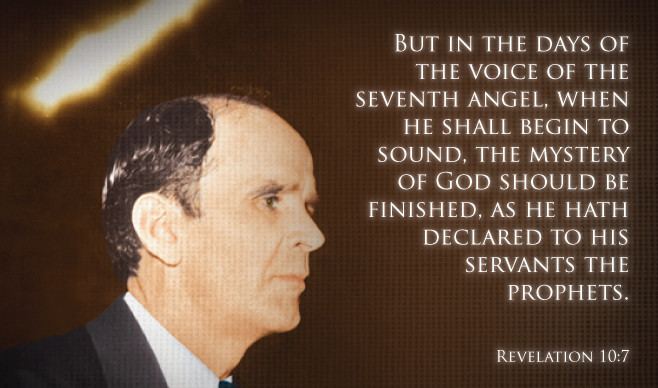
Branham stated that his first exposure to Pentecostalism was in 1936; however, the First Pentecostal Baptist Church he attended prior to 1933 believed in most of the basic doctrines of Pentecostalism. As a result, Branham appears to have been exposed to Pentecostalism from the date of his conversion to Christianity. Pentecostalism is a renewal movement that started in the early 20th century that stresses a post-conversion baptism with the Holy Spirit for all Christians, with speaking in tongues ("glossolalia") as the initial evidence of this baptism. Oneness Pentecostalism is a subset of churches within Pentecostalism that adhere to a more modalistic view of God and hold to a baptismal formula in the name of Jesus, rather than rather than the more common Trinitarian formula "in the name of the Father, and of the Son, and of the Holy Spirit".
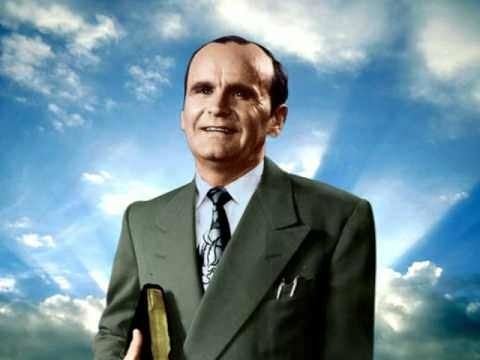
Branham was baptizing converts on June 11, 1933 in the Ohio River near Jeffersonville when he said that people along the bank saw a bright light descend over where he was and that he heard a voice say, "As John the Baptist was sent to forerun the first coming of Jesus Christ, so your message will forerun His second coming." The only available newspaper report of the event was that of the Jeffersonville Evening News on June 2, which indicated that the Branham campaign reported 14 converts. Given the lack of corroborating evidence for this supposed supernatural event it is possible that Branham later embellished the incident by "remembering" the forerunner message when he was achieving success in the healing revival.
From 1933 to 1946, Branham was the pastor of the Branham Tabernacle in Jeffersonville.
Branham's wife, Hope, died on July 22, 1937 and their daughter died four days later (July 26, 1937) after the Ohio River flood of 1937. Branham interpreted their deaths as God's punishment for his resistance to holding revivals for the Oneness Pentecostals, something he felt God had wanted him to do. This appears to have been an embellishment to enhance his relationship with the Pentecostals.
Braham married Meda Marie Broy in 1941 and together they had three children: Rebekah (b. 1946), Sarah (b. 1950), and Joseph (b. 1955).
The Healing Revival
Branham's first meetings as a faith healer started in 1946. His healing services are well documented and he is regarded as the pacesetter for those who followed. Historians generally mark the 1946 meetings as inaugurating the modern healing revival. Branham said he had received an angelic visitation on May 7, 1946 commissioning his worldwide ministry. In an attempt to link his ministry with the "end time", he said that this was the same day that the State of Israel became "a nation". Pre-millennial dispensationalism views the establishing of a Jewish state as a sign of the imminent return of Christ. Branham viewed it as providing vindication for the supernatural nature of his ministry. However, he had the date wrong, as the establishment of the State of Israel was May 14, 1948.
During the mid-1940s, Branham conducted healing campaigns almost exclusively with Oneness Pentecostal groups. The broadening of Branham's ministry to the wider Pentecostal community came as a result of his introduction to Gordon Lindsay in 1947, who soon became his primary promoter. In the same year, Ern Baxter joined the team that was running the Branham meetings. Gordon Lindsay proved to be an able publicist for Branham, founding The Voice of Healing magazine in 1948, which was originally aimed solely at reporting Branham's healing campaigns. According to a Pentecostal historian, "Branham filled the largest stadiums and meeting halls in the world."
Controversy surrounded Branham from the early stages of his ministry. In 1947, a minister in Saskatchewan, Canada, stated that many Branham pronounced as healed later died. A year later, W. J. Taylor, a district superintendent with the Pentecostal Assemblies of Canada, raised the same concern and asked for a thorough investigation, presenting evidence that claims of the number of people healed were vastly overestimated. He stated that "there is a possibility that this whole thing is wrong".
By 1950, the Branham team included F. F. Bosworth. On the night of January 24, 1950, a photograph was taken of Branham during a debate between Bosworth and a Baptist minister regarding the biblical justification for healing. The photograph showed a light appearing above Branham's head. That "photograph became perhaps the most famous relic in the history of the revival" Branham believed the light was supernatural and was a divine vindication of his ministry. The photographer, Theodore J. Kipperman, stated in 1984 that it was "the most amazing thing I ever saw". In 1951, U.S. Congressman William Upshaw, who had been crippled as the result of an accident, claimed he was miraculously healed in a Branham meeting and sent a letter describing his unsubstantiated experience to each member of Congress. Upshaw died the following year. Branham claimed that King George VI of England was healed through his prayers, although there is significant doubt in this regard given that the King died less than two years after Branham claimed to have prayed for him. Branham also claimed to have witnessed a young boy raised from the dead in Finland in April 1950, although again there were widely divergent stories between Branham and other witnesses to the event.
Decline of the Healing Revival
In 1955, Branham's career began to falter. Jim Jones, the founder and leader of the Peoples Temple, best known for the mass murder and suicide that resulted in 918 deaths in November 1978, used Branham to springboard his own ministry. He organized a mammoth religious convention that took place June 11 through June 15, 1956, at Cadle Tabernacle in Indianapolis. To draw crowds, Jones needed a religious headliner, and so he arranged to share the pulpit with Branham.
Financial difficulties came to a head in 1956 when the Internal Revenue Service charged Branham with tax evasion, a case that was eventually settled out of court with the payment of a $40,000 penalty. Where he once had received "a thousand letters a day, his mail dropped down to 75" but Branham thought the decline was only temporary.
By the 1960s, he had become an extremely controversial teacher. In 1963, Branham taught that the "End Time Messenger who was the Angel of the Seventh Church Age in these final closing days of time had come in the spirit of Elijah". His biblical proof for the return of the spirit of Elijah was based on Malachi 4:5-6. The reference to the "Seventh Church Age Messenger" came from his interpretation of Revelation 3:14-22, the message to the church of Laodicea. An analysis of his teaching on the identity of this Laodicean prophet-messenger reveals conflicting and confusing assertions and disclaimers. Branham believed that he was (and desired to be) the eschatological prophet, but also had doubts about his role.
The result of his controversial teaching was that many Pentecostals judged that Branham had "stepped out of his anointing" and had become a "bad teacher of heretical doctrine".
Death
On December 18, 1965, Branham and his family (except his daughter Rebekah) were returning to Jeffersonville, Indiana from Tucson, Arizona for the Christmas holiday. About three miles east of Friona, Texas (about 70 miles south-west of Amarillo on U.S. Highway 60), just after dark, a car traveling west in the eastbound lane hit Branham's car head-on. He was rushed to the hospital in Amarillo, Texas, but succumbed to his injuries on Christmas Eve.
The initial reaction of Branham's followers to his death was one of shocking disbelief. In the confusion immediately following his death, expectations developed that he would rise from the dead. His funeral was held on December 29, 1965, but his burial was delayed indefinitely. The press surmised that this was a result of Branham's expected resurrection. He was finally buried on April 11, 1966, the day after Easter Sunday, which was accepted reluctantly by his followers. Most believed that he would have to return to fulfill a vision that he had regarding future tent meetings.
Gordon Lindsay's eulogy stated that Branham's death was the will of God and privately, he accepted the interpretation of Kenneth Hagin, who claimed to have prophesied Branham's death two years before it happened. According to Hagin, God revealed that Branham was teaching false doctrine and God was removing Branham because of his disobedience.
Teaching
Branham became more controversial in his later years and this was particularly evident in his development of a theology that emphasized a few select doctrines. His theology seemed complicated and bizarre to many people who admired him personally. Although not always consistent with each other, his primary concerns were eschatology, the denial of an eternal Hell, Oneness Pentecostalism, predestination, eternal security and the serpent's seed. Branham asserted that his doctrinal teachings were given to him by divine revelation.
Denial of an eternal hell
Prior to 1957, Branham taught a doctrine of eternal punishment in hell. However, by 1957 he was proclaiming that hell was not eternal.
annihilationism was not a new concept to Pentecostalism as Charles Fox Parham had also advocated the doctrine. Although Branham had taught the doctrine since 1957, he suggested in 1960 that the Holy Spirit had just revealed it to him as one of the mysteries that God was revealing in the "end-time".
Oneness Pentecostalism
Branham seemed to change his theological positions on the Godhead throughout his ministry. Early in his ministry, Branham at times referred to the Holy Spirit as the third person of the Trinity and it was also reported that Branham had told some Trinitarians that he agreed with them, but that he felt obligated to the "Jesus Only" Pentecostals because they had supported him early in the revival. However, by the 1960s Branham was openly teaching the oneness position, which holds that there is one God who manifests himself in multiple ways, as opposed to the trinitarian view that the Godhead is made up of three distinctly different persons.
Branham preached that trinitarianism was tritheism and insisted that members of his congregation be rebaptized in Jesus's name in imitation of the example of the Apostle Paul. He tried to distinguish himself from the Oneness baptism in the name of "Jesus" by teaching that the baptismal formula should be in the name of the "Lord Jesus Christ". He argued that there were many people named "Jesus", but there was only "Lord Jesus Christ".
While Branham was at times inconsistent with respect to the need to be rebaptized, by the end of his ministry part of his message required an acceptance of the "oneness" of the Godhead and baptism in the name of the Lord Jesus Christ.
Serpent's seed
Branham taught that Eve and the serpent had sexual intercourse and Cain was born. Consequently, every woman potentially carried the literal seed of the devil. Cain's descendants were today masquerading as the educated and the scientists, who were "a big religious bunch of illegitimate bastard children". The serpent was the "missing link" between the chimpanzee and man, who was perhaps ten feet tall and looked just like a man.
The central sins of modern culture - immoral women and education - were a result of the serpent's seed. Branham's attitude toward culture was a very extremist perspective of "Christ against Culture". Education was Satan's snare for intellectual Christians who rejected the supernatural and Satan's tool for obscuring the "simplicity of the Message and the messenger".
View of women
Branham was critical of the "immorality of modern women". He taught that a woman with short hair was breaking the commandments of God and ridiculed women's desire to artificially beautify themselves with makeup. Branham believed that scantily clad women were guilty of committing adultery because their appearance motivated men to lust. A woman's place was "in the kitchen".
Branham also taught that women were not a "created product of God". Rather they were merely byproducts of man. His pronouncements with respect to women were often contradictory. He once told women who wore shorts not to call themselves Christians. But he qualified his denunciations by affirming that obedience to his moral code was not a requirement for salvation. However, he also implied that no woman that disobeyed his "Thus Saith the Lord" moral code would be part of the rapture.
Branham's attitude towards women was misogynistic, covering physical appearance, sexual drive, and marital relations. According to Weaver, Branham saw women as "essentially immoral sexual machines who were to blame for adultery, divorce and death. They were the tools of the Devil."
Eschatological teachings
Branham claimed to have had a prophetic revelation in June, 1933 that comprised seven major events that would occur before the Second Coming of Christ. He believed that five of the seven predictions, relating to world politics, science, and the moral condition of the world, had been fulfilled. The final two visions, one related to the Roman Catholic Church gaining power in the United States and the second detailing the destruction of the United States, would be fulfilled by 1977, subsequent to which Christ would return. A comparison of Branham's descriptions of the prophecies reveals his tendency to exaggerate and embellish his actual predictions.
In December 1964, Branham prophesied that the city of Los Angeles would sink into the Pacific Ocean. This was subsequently embellished to a prediction that a chunk of land 1500 miles long, three or four hundred miles wide and 40 miles deep would break loose, causing waves that would "shoot plumb out to Kentucky".
In 1960, Branham preached a series of sermons on the seven church ages based on chapters two and three of the Book of Revelation. The sermons depended heavily on C. I. Scofield's dispensationalism and the publications of Clarence Larkin. Branham described each church as representing a historical age and suggested that the angel of each age was an earthly messenger. His most important "revelation" was the description of the messenger to the Laodicean Church age, which would immediately precede the rapture; the characteristics of this age were all similar to the age Branham was living in at that time.
Branham regarded his series of sermons on the Seven Seals in 1963 as a highlight of his ministry. In reality, Branham's teaching on this subject revealed very little new doctrine and was essentially a laborious restatement of the dispensationalism espoused in the sermons on the seven church ages.
Branham's most controversial revelation was his claim to be the end-time "Elijah" prophet of the Laodicean Church age.
Anti-denominationalism
Another contributor to the controversy surrounding Branham in his later ministry was that he believed that denominationalism was the "mark of the beast".
Much of Branham's "revelation" was similar to Scofield's dispensationalism and the anti-Catholic rhetoric of classical Pentecostalism. In his later years, he came to believe that all denominations were "synagogues of Satan". The heart of Branham's message was for the elect Bride to "come out" of denominationalism and accept the message of the Laodicean messenger who had the "message of the hour". Continued allegiance to a denomination was to take the mark of the beast, which would mean missing the rapture.
Legacy and influence
Along with Oral Roberts, Branham was the most revered leader of the [[Healing Revival]. The New International Dictionary of Pentecostal and Charismatic Movements refers to Branham as the "initiator of the post-World War II healing revival". However, Branham is also viewed as having been well outside of orthodoxy by most evangelicals. Michael Moriarty in The New Charismatics states:
"Branham's aberrational teachings not only cultivated cultic fringe movements like the Latter Rain Movement and the Manifested Sons of God, but they also paved a pathway leading to false predictions, revelatory madness, doctrinal heresies, and a cultic following that treated his sermons as oral Scriptures."Hank Hanegraaff in Counterfeit Revival states that "Branham's failed prophecies were exceeded only by his false doctrine". For the most part, Branham, his message, and his followers are little known in the Western world. Bob Larson, in Larson's Book of World Religions and Alternative Spirituality, refers to Branham as an "odd historical footnote".
However, Branham had a significant influence on several leaders of religious sects: Jim Jones and Paul Schäfer.
At the end of his ministry, Branham's followers had placed him at the "center of a Pentecostal personality cult". Followers of Branham can be found around the world. Weaver estimates the number of "Branhamites" (or "Message" believers as they refer to themselves) at about 50,000 in the United States, with a considerable following in Central and South America (estimated at 40,000 in Brazil alone), India, and Africa (particularly in Kenya, Nigeria, Ghana and the Democratic Republic of the Congo).
However, other than those that still follow him as their prophet, Branham has faded into obscurity. Robert Price (as quoted by Douglas Weaver) summarized Branham's legacy as follows:
"In the days of his prominence, the 1950's, what Spirit-filled believer did not know his name? Yet today, we may wonder, what believer does?"